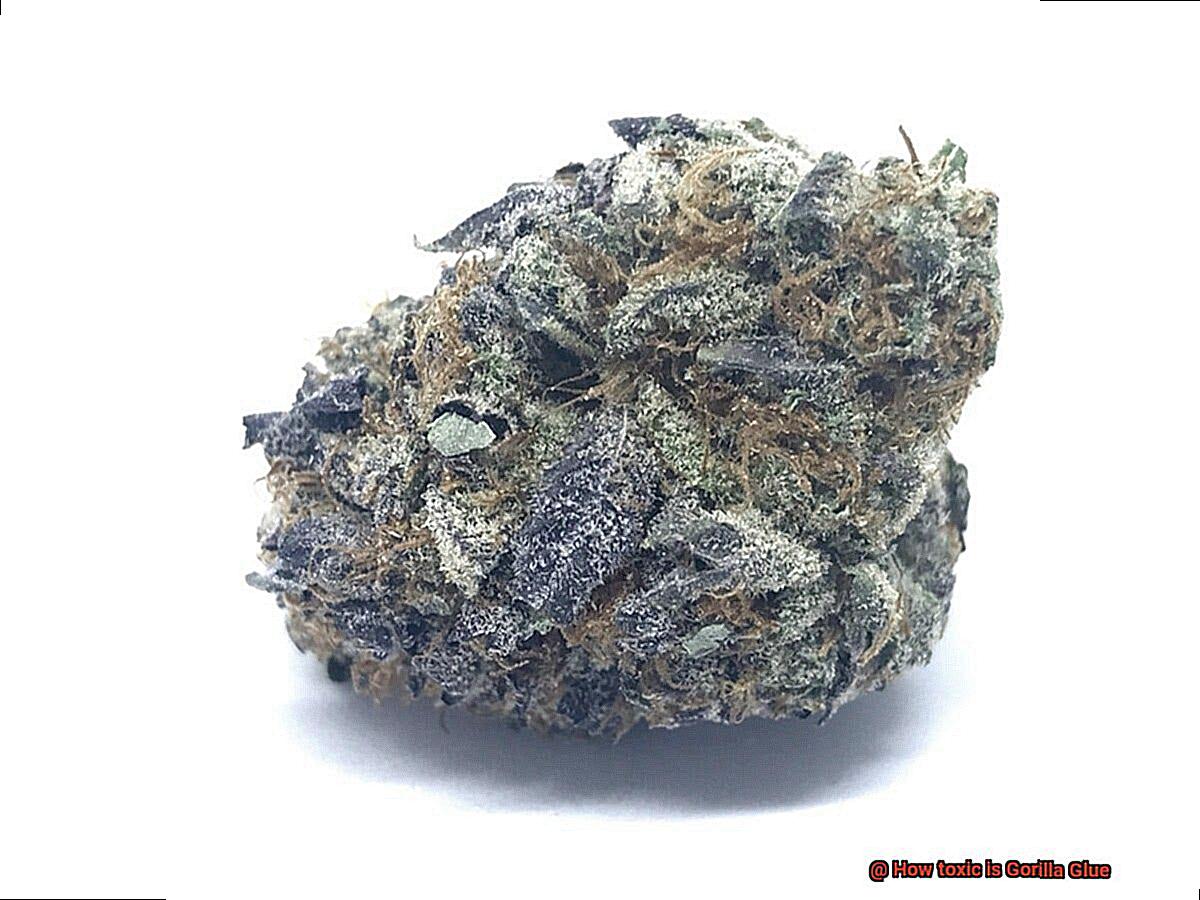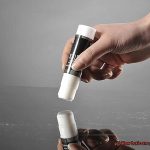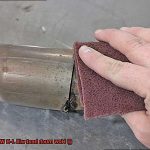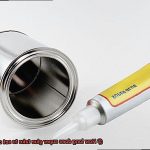Imagine this: you’re knee-deep in a home improvement mission, armed with ambition and a desire to conquer those DIY dreams. And what’s your trusty sidekick? None other than the legendary Gorilla Glue – the adhesive powerhouse that promises to stick it all together. But, pause for a moment, have you ever pondered just how safe this glue really is?
In recent years, whispers of Gorilla Glue’s potential toxicity have swirled around like an urban legend on steroids. Opinions clash, rumors fly, and it’s high time we cut through the noise and get to the truth of the matter. So buckle up, my curious comrades, as we embark on a journey into the realm of Gorilla Glue – debunking myths and revealing its true colors.
Together, we’ll dissect the very composition of this sticky wonder, explore its reported toxicity levels (or lack thereof), and arm ourselves with precautionary measures for a worry-free bonding experience. Whether you’re an avid DIY daredevil or simply a seeker of knowledge, prepare yourself for an eye-opening adventure that will shatter any misconceptions about Gorilla Glue.
So grab a seat, kick back, and let’s unravel the enigma surrounding this adhesive titan once and for all. It’s time to separate fact from fiction and put any lingering doubts to rest – because knowledge is power when it comes to conquering your DIY domain. Let’s dive in.
What is Gorilla Glue?
Contents
In the world of adhesive products, one name reigns supreme – Gorilla Glue. This dynamic and robust glue has earned its reputation for its exceptional bonding capabilities and unwavering reliability. Whether you’re a DIY enthusiast or a professional in need of a steadfast adhesive solution, Gorilla Glue is your go-to.
So, what exactly is Gorilla Glue? It’s a polyurethane-based adhesive that burst onto the scene in 1999, courtesy of the Gorilla Glue Company. Since then, it has become a household staple, renowned for its ability to bond an array of materials with ease. From wood and metal to stone, ceramic, foam, and glass, Gorilla Glue is the adhesive superhero that can tackle it all.
One of Gorilla Glue’s standout features is its resistance to water and extreme temperatures. Come rain or shine, this glue holds tight. It’s perfect for both indoor and outdoor projects, from repairing furniture to crafting masterpieces or working on construction ventures. Gorilla Glue is built to withstand the test of time.
When it comes to options, Gorilla Glue has you covered. The original formula comes in easily applicable bottles, allowing precise control over the amount of glue used. For quick fixes and smaller projects, Gorilla Super Glue is the instant bonding sidekick you need. If you’re working with wood, look no further than Gorilla Wood Glue – specially formulated for strong and durable bonds on wooden surfaces. And let’s not forget about Gorilla Tape – a heavyweight champion that can conquer various applications.
While Gorilla Glue offers unmatched bonding prowess, it’s essential to be aware of safety risks. The glue contains polyurethane, which can be toxic if ingested or inhaled. Ingesting Gorilla Glue can lead to severe health complications, including digestive tract blockages requiring surgical intervention. Inhaling its fumes can irritate the respiratory system and cause breathing difficulties. To ensure safe use, follow the manufacturer’s guidelines, don protective gloves, and ensure proper ventilation. Keep Gorilla Glue away from children and pets to avoid accidental ingestion or exposure.
Potential Health Risks of Gorilla Glue
Gorilla Glue, the mighty adhesive known for its strength and versatility, comes with potential health risks that every user should be aware of. The primary concern lies in its toxicity, as it contains a chemical compound called polyurethane that can release harmful fumes and vapors when it dries. Inhaling these fumes can irritate the respiratory system, causing coughing, difficulty breathing, chest tightness, and throat irritation. These side effects are far from ideal when you’re in the middle of a crafting masterpiece.
Direct contact with Gorilla Glue can also pose risks to your skin and eyes. Prolonged exposure to the glue on your skin can lead to irritation, redness, and even chemical burns. And let me tell you, this stuff is not something you want anywhere near your eyes. It can cause serious eye damage and vision problems that no one wants to deal with.
To protect yourself from these potential health risks, there are some simple steps you can take. First and foremost, it’s crucial to read and follow the manufacturer’s instructions carefully. This includes using Gorilla Glue in a well-ventilated area or wearing a respirator mask to avoid inhaling those pesky fumes.
When applying the glue, make sure to shield your skin by wearing gloves and avoiding direct contact. And if by any chance you do get some on your skin or in your eyes (oops.), immediately rinse with plenty of water. Remember, it’s better to be safe than sorry.
If you plan on using Gorilla Glue indoors, open some windows or use fans to improve air circulation and minimize the inhalation of fumes. Individuals with respiratory conditions, allergies, or sensitivities should exercise extra caution and may even want to consult a professional before using this adhesive.
And last but not least, store Gorilla Glue properly in a cool and dry place, out of reach of curious children and mischievous pets. Accidental ingestion can lead to gastrointestinal issues and other health complications that nobody wants to deal with.
Ingestion of Gorilla Glue
Gorilla Glue, the mighty adhesive that holds your DIY projects together, harbors a dark secret. Ingesting this glue carries serious health risks. Let’s dive into the world of glue safety and uncover the potential dangers.
The Risks of Ingesting Gorilla Glue:
Blockages and Obstructions:
Gorilla Glue can solidify and expand in the digestive tract, causing dangerous blockages. Its polyurethane content reacts with moisture, creating rock-hard masses that nobody wants inside their bodies.
Unpleasant Symptoms:
Ingesting Gorilla Glue brings a host of unpleasant symptoms. Abdominal pain, nausea, vomiting, difficulty swallowing, and constipation turn your stomach into a DIY disaster zone.

Severe Complications:
In severe cases, Gorilla Glue can perforate or rupture the bowels. These life-threatening emergencies demand immediate attention. Never underestimate the dangers of ingesting this glue.
Treatment and Prevention:
Seek medical help if Gorilla Glue is swallowed. Doctors will examine you and conduct imaging tests to assess the obstruction’s extent. Treatment may involve monitoring and waiting for the glue to naturally pass through the digestive system. Surgery may be necessary for severe cases.
Prevention is key. To avoid accidental ingestion:
- Store Gorilla Glue securely, out of reach of children and pets.
- Follow the manufacturer’s safety instructions.
- Never mistake Gorilla Glue for a food product.
Inhalation of Gorilla Glue Fumes
Buckle up, because we’re about to uncover the sticky truth and arm you with the knowledge you need to stay safe while indulging in your adhesive adventures.
Let’s dive right into it. When you crack open a fresh bottle of Gorilla Glue, it releases fumes containing volatile organic compounds (VOCs). These are chemicals that can vaporize at room temperature and enter the air, posing a potential health risk if inhaled. Picture toluene, xylene, and methylene chloride – not exactly the party guests you want in your lungs.
So, what can happen if you breathe in these fumes? Well, for starters, your respiratory system might revolt. Coughing, wheezing, shortness of breath, and throat irritation can become unwelcome guests if you’re exposed to Gorilla Glue fumes. And if you already have respiratory conditions like asthma or chronic bronchitis, consider yourself more susceptible to these effects. No thanks.
But wait, there’s more. Prolonged or excessive exposure to these VOCs can lead to even more severe health consequences. Studies have shown that long-term inhalation of VOCs like toluene and xylene can wreak havoc on your central nervous system, liver, kidneys, and respiratory system – definitely not the kind of DIY project you signed up for.
Now that we’ve got your attention, let’s talk prevention. The key is to work smart and safe. First things first, always use Gorilla Glue in a well-ventilated area. Crack open those windows, let the fresh air in, and bid those fumes farewell. If you’re working in an enclosed space, it’s a good idea to use fans or exhaust systems to keep the air flowing smoothly.
But we’re not done yet – gear up. Personal protective equipment (PPE) is your best friend when it comes to glue-related safety. Slip on some gloves, rock those safety goggles, and if you’re really serious about protecting your precious lungs, grab a respirator mask specifically designed for organic vapors. Safety first, my friends.
Accidents happen, we get it. If you accidentally inhale Gorilla Glue fumes and you start experiencing persistent or worsening symptoms, don’t tough it out. Seek medical attention right away. Let the professionals evaluate the severity of your exposure and provide the necessary treatment.
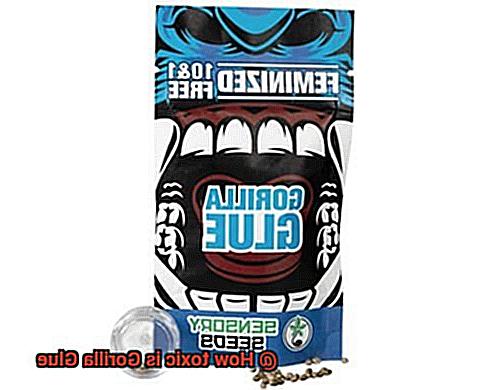
Skin Contact with Gorilla Glue
When it comes to skin contact with Gorilla Glue, we need to tread carefully through this gluey adventure. We all know that Gorilla Glue is a superhero when it comes to sticking things together. But did you know that it can also wreak havoc on our precious skin? That’s right, folks. The chemicals in Gorilla Glue have the power to irritate and damage our skin, and that’s definitely not the bonding experience we signed up for.
At the heart of this powerful adhesive lies polyurethane, a fancy word for a moisture-activated polymer. But what happens when this sticky substance meets our skin? Brace yourselves, because it can actually bond our skin together. Talk about a real-life sticky situation.
But fear not, my friends. If you find yourself in this predicament, there are steps you can take to safely remove the glue without causing further harm. First off, resist the urge to pull or tug on the affected area. Trust me, that will only make matters worse. Instead, try soaking the glued area in warm soapy water for a few minutes. This soothing soak will help loosen the bond and make removal easier.
If soaking doesn’t do the trick, it’s time to get a little abrasive (but gently so.). Grab a pumice stone or a soft cloth and gently rub the area. The goal here is to delicately remove the glue without causing any additional damage to your precious skin.
But wait, what if the glue has dried and hardened on your skin? Well, my friend, it might be time to call in the professionals. A healthcare expert can provide specialized solvents or techniques to safely dissolve the glue and free your skin from its sticky clutches.
Of course, prevention is always better than cure. So, whenever you’re working with Gorilla Glue or any adhesive for that matter, don’t forget to gear up with protective gloves and clothing. And always, always read and follow the instructions provided by the manufacturer. Safety first, my friends.
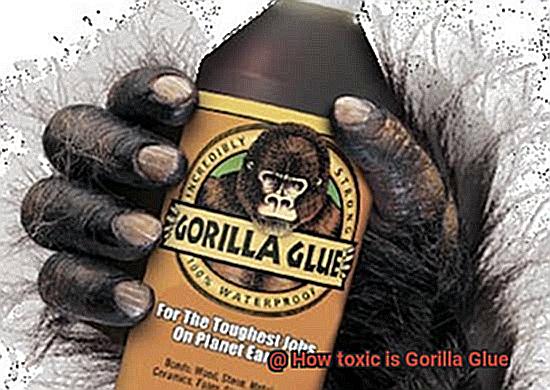
Now, if you experience any persistent pain, redness, or any other concerning symptoms after encountering Gorilla Glue, it’s time to consult a healthcare professional. They can provide further evaluation and treatment if needed.
Eye Contact with Gorilla Glue
Accidental mishaps are bound to happen during DIY projects, but when it comes to eye contact with Gorilla Glue, the consequences can be more than just messy. This article explores the hazards of eye contact with Gorilla Glue, preventive measures to take, and the necessary actions in case of exposure.
The Hazards:
Gorilla Glue contains powerful chemicals like polyurethane and solvents that make it an incredibly strong adhesive. While these properties make it perfect for bonding materials together, they can be harmful if they come into contact with our delicate eyes. Eye contact with Gorilla Glue can cause irritation, redness, and discomfort. In severe cases, it may even lead to corneal damage or vision impairment.
Preventive Measures:
Prioritizing eye safety is essential, and here are some crucial tips to keep in mind while working with Gorilla Glue or any adhesive product:
- Wear protective eyewear: Invest in high-quality safety goggles or glasses that fully cover your eyes. This simple step significantly reduces the risk of accidental eye exposure to glue or other harmful substances.
- Read and follow instructions: Take the time to carefully read and follow the manufacturer’s instructions. This includes avoiding direct contact with skin and eyes and ensuring proper ventilation in the working area.
- Keep water nearby: Always have a clean water source nearby when working with Gorilla Glue. This allows for immediate flushing of the eyes if accidental exposure occurs.
Actions to Take:
If eye contact occurs, immediate action is crucial:
- Flush with water: Quickly flush the affected eye with clean water for at least 15 minutes. This dilutes the glue and minimizes its adverse effects. Avoid rubbing or touching the eye to prevent further irritation or spreading of the glue.
- Seek medical attention: After flushing the eye, seek medical attention as soon as possible. A healthcare professional can assess the situation and provide appropriate treatment based on the severity of the eye injury.
Safety Precautions When Using Gorilla Glue
Gorilla Glue is a mighty adhesive that boasts incredible strength and versatility. However, this powerful adhesive contains chemicals that can be harmful if not used properly. To ensure your safety and minimize potential risks when using Gorilla Glue, it is crucial to follow these important safety precautions:
- Wear Protective Gear: Before you embark on your Gorilla Glue journey, don your armor of protective gloves and safety glasses. These shields will safeguard your precious skin and eyes from any potential contact with the glue. Gorilla Glue has a knack for causing skin irritation and stubbornly sticking around, so it’s best to avoid any direct encounters.
- Work in a Well-Ventilated Area: Gorilla Glue packs a punch with its chemical composition, including isocyanates that can release fumes. These fumes can be harmful if inhaled, so it’s vital to create a fortress of fresh air. Open windows or summon the wind of a fan to ensure proper ventilation and disperse any airborne threats.
- Follow Manufacturer’s Instructions: The wisdom of the manufacturer holds the key to safe bonding with Gorilla Glue. Take heed of their instructions like a loyal apprentice. Stay within the recommended temperature range for application and apply the glue evenly on the surfaces to be bonded. Avoiding excessive glue or improper application will reduce the risk of accidents or exposure to harmful chemicals.
- Act Quickly in Case of Accidental Contact: If, by some twist of fate, Gorilla Glue breaches your defenses and comes into contact with your skin, spring into action without hesitation. Rush to the nearest soap and water sanctuary and wash the affected area immediately. In case the glue dares to invade your precious eyes, unleash a torrent of water upon them for at least 15 minutes and summon medical aid promptly. Swift action can minimize any potential harm.
- Store Properly: Gorilla Glue is a formidable ally, but it must be kept under lock and key away from innocent children and curious pets. Treat it like a prized relic; store it in a cool and dry haven, far from the temptations of heat or open flames. This sanctuary will preserve the glue’s integrity and shield you from any accidents.
- Also Read: Is Gorilla Glue Safe for Aquariums?
Conclusion
In conclusion, Gorilla Glue is not to be taken lightly. This adhesive packs a powerful punch when it comes to bonding, but it also carries some potential toxicity that demands our attention.
One of the main culprits behind Gorilla Glue’s toxic nature is polyurethane. Ingesting or inhaling this substance can have dire consequences for your health. Swallowing the glue can lead to serious complications, such as blockages in your digestive system that might even require surgical intervention. And let’s not forget about the fumes – breathing them in can irritate your respiratory system and leave you gasping for air.
To ensure your safety, it’s crucial to follow the manufacturer’s guidelines with utmost care. Make sure you’re working in a well-ventilated area or don a trusty respirator mask to keep those pesky fumes at bay. And don’t forget about protecting those precious hands of yours – gloves are an absolute must if you want to avoid any direct contact with this potentially harmful substance.
Storing Gorilla Glue properly is another vital step in keeping danger at bay. Keep it cool and dry, tucked away from curious little hands and paws who might mistake it for a tasty treat or chew toy.
But accidents happen, right? If you accidentally ingest or get Gorilla Glue in your eyes, don’t waste any time – take immediate action. Seek medical attention right away so that professionals can evaluate and treat you properly.
By adhering (pun intended) to these safety precautions and staying informed about the risks associated with Gorilla Glue, you can tackle your DIY projects fearlessly. Remember, safety should always be your number one priority.
FINAL DRAFT:
In conclusion, Gorilla Glue is not a force to be reckoned with. This adhesive wields incredible bonding power but also harbors potential toxicity that demands our undivided attention.
Polyurethane is the villain responsible for Gorilla Glue’s toxic nature. Ingesting or inhaling this substance can have catastrophic consequences for your well-being. Swallowing the glue can lead to severe complications, causing blockages in your digestive system that may necessitate surgical intervention. And let’s not forget about those noxious fumes – breathing them in can leave your respiratory system irritated and gasping for air.
To ensure your safety, it is of utmost importance to meticulously follow the manufacturer’s guidelines.

